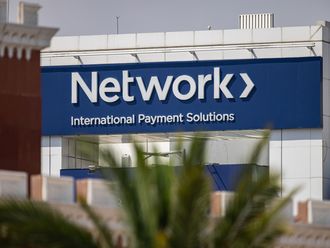Dubai: Middle Eastern investment banking fees totalled an estimated $462.1 million (Dh1.7 billion) during the first six months of 2017, down 15 per cent compared to the value of fees recorded during the same period in 2016.
Debt capital markets underwriting fees totalled $136.9 million, up 88 per cent year-on-year and the highest first half total in the region since records began in 2000. Equity capital markets fees increased 36 per cent to $39.7 million. Fees generated from completed M&A transactions totalled $98.0 million, a 20 per cent decrease from last year and the lowest first six month total since 2012. Syndicated lending fees declined 41 per cent year-on-year to $187.6 million, a three year low.
“Debt capital markets fees accounted for 30 per cent of the overall Middle Eastern investment banking fee pool, the highest first half share since 2001. Syndicated lending fees accounted for 41 per cent, while completed M&A advisory fees and equity capital markets underwriting fees accounted for 21 per cent and 9 per cent respectively,” said Nadim Najjar, Managing Director, Middle East and North Africa, Thomson Reuter.
Among the banks, HSBC earned the most investment banking fees in the Middle East during the first six months of 2017, a total of $29.2 million for a 6.3 per cent share of the total fee pool. UBS topped the completed M&A fee rankings with 20 per cent of advisory fees, while JP Morgan was first for DCM underwriting.
ECM underwriting was led by EFG Hermes with $12.4 million in ECM fees, or a 31 per cent share. Industrial and Commercial Bank of China took the top spot in the Middle Eastern syndicated loans fee ranking.
A big surge in regional debt capital markets underwriting fees were supported by significant increase in international debt issuance by regional issuers. Bolstered by Saudi Arabia’s $9 billion international Islamic bond in April and Kuwait’s $8 billion debut international bond sale in March, Middle Eastern debt issuance reached $57.4 billion during the first half of 2017, 53 per cent more than the proceeds raised during the same period last year and by far the best annual start in the region since records began in 1980. Saudi Arabia was the most active nation in the Middle East accounting for 21 per cent of activity by value, followed by Kuwait with 18 per cent. JP Morgan took the top spot in the Middle Eastern bond ranking during the first half of 2017 with a 13.4 per cent share of the market, while HSBC took the top spot for Islamic DCM issuance with a 12.3 per cent share.
Equity-related issuance from the region totalled $1 billion during the six months of 2017, a 72 per cent decline year-on-year and the lowest annual start for issuance in the region since 2004. Five initial public offerings raised $603.3 million and accounted for 60 per cent of first half ECM activity in the region. National Bank of Kuwait took first place in the H1 2017 Middle Eastern ECM ranking with a 24 per cent market share.
The value of announced M&A transactions with any Middle Eastern involvement reached $20.1 billion during the first six months of 2017, 8% more than the value recorded during the first half of 2016. HSBC topped the H1 2017 announced any Middle Eastern involvement M&A league table. Morgan Stanley and Citi took second and third places, respectively.










